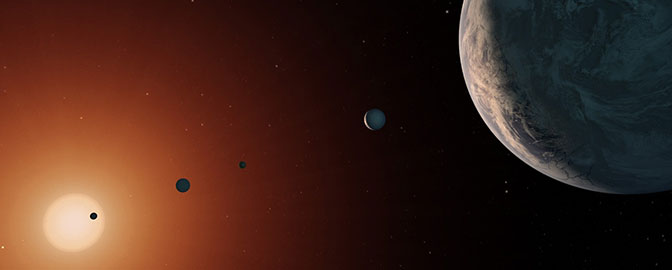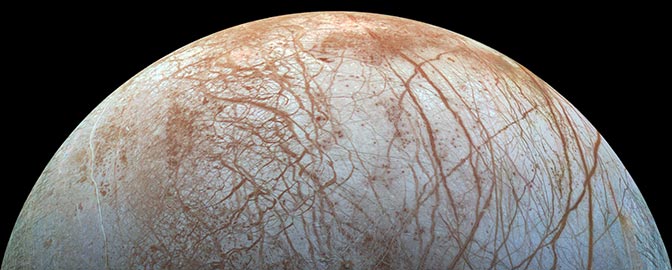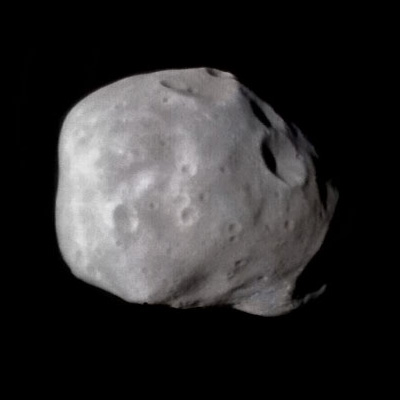Emily Lakdawalla • Dec 04, 2007
Epimetheus
Cassini nabbed a nice set of views of Epimetheus yesterday. Epimetheus is one of Saturn's smaller moons, orbiting between the main ring system and the larger round moons. Epimetheus is nearly co-orbital with Janus, which has four times Epimetheus' mass; the two dance past each other once every four years.
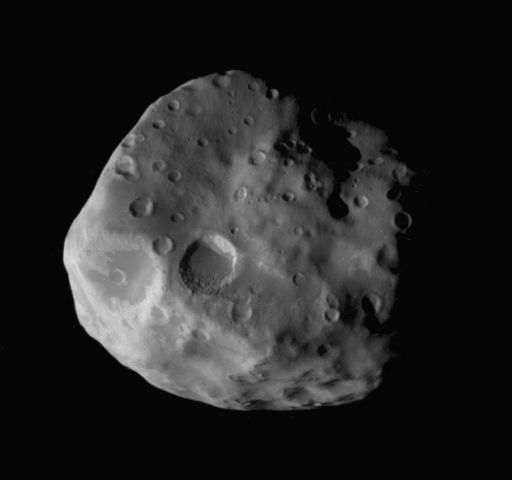
NASA / JPL / SSI / Ian Regan
Epimetheus
Cassini captured this low-phase view of Epimetheus on December 3, 2007. At 144 x 108 x 98 kilometers in size, Epimetheus is the 12th largest moon of Saturn, co-orbital with the larger Janus, outside the rings but inside the orbit of Saturn's bigger icy moons. It appears to be coated in dust, but some crater rims are relatively sharp. Near the top of this image appear some grooves reminiscent of those on Phobos.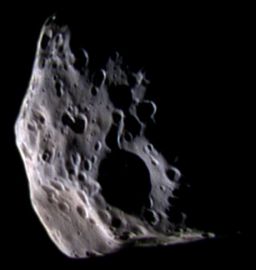
Epimetheus
Cassini captured this view on March 30, 2005, from a distance of only 74,600 kilometers. The view is actually a false-color composite of ultraviolet, green, and infrared images. Color variations in the image are most likely a result of "photometric effects," changes in the reflectivity of the surface of Epimetheus with the angle of the incoming sunlight. The large circular crater in the lower center is Hilairea, which has a diameter of about 33 kilometers (21 miles). To the lower left is the crater Pollux, with a reddish interior. Source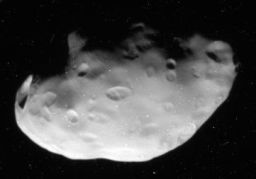
NASA / JPL / SSI
Pandora
Saturn's moon Pandora as seen by Cassini on its September 5, 2005 flyby. Resolution in the full-size image is approximately 300 meters per pixel. SourceEpimetheus may look similar to Phobos, but it often looks dissimilar to its own self. Here's a nice montage of five images of Epimetheus, four from Cassini and one from Voyager.
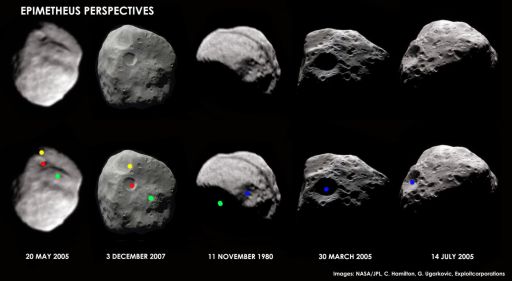
NASA / JPL / SSI / Calvin Hamilton / Gordan Ugarkovic / Exploitcorporations
Views of Epimetheus from Cassini and Voyager
Lumpy Epimetheus looks different with each spacecraft flyby. Four of the five images are from Cassini; the center image is from Voyager 1 (the black stripe across the moon is the shadow of the F ring). In the bottom row, colored dots show features that correlate between adjacent images.The Time is Now.
As a Planetary Defender, you’re part of our mission to decrease the risk of Earth being hit by an asteroid or comet.
Donate Today

 Explore Worlds
Explore Worlds Find Life
Find Life Defend Earth
Defend Earth